Ojio Castle
-Another prominent castle at Himeji area-
Overview
Name: Ojio castle (Ojio-jo)
Alias: Okishio-jo (Okishio castle)
Place: Yumesaki-cho Himeji city, Hyogo
Type: Mountain Castle
Built: 1469
Remaining remnants: Stone walls, clay walls and moats
Title:
Brief History
Ojio castle (置塩城) is located at Ojio-yama mountain, one of over 300 meter above hillside in the north part of Himeji city. This castle locates at the middle of narrow valley of Yumesaki-gawa river, runs though north and southward.
This valley connects two main route of Sanin region, one is sea side route along Setonaikai sea which is equivalent to Sanyo highway, and another is a mountainous road spreads at the middle of Chugoku region currently used as Chugoku highway. The place of Ojio castle itself is a crossing point of roads from four direction, and it is a good place where defense and communication is well balanced.
In Himeji area, there are two prominent castle. Needless to say, one is Himeji castle which is praised as the best modern castle of the Japan, equips with white elegant main tower and many other buildings and nominated as World Heritage. Another prominent castle is this Ojio castle, even though not so famous but evaluated as one of the largest and well built medieval mountain castles.
Rise and fall of Akamatsu clan
Ojio castle is built by Akamatsu clan in the middle of 15th century. Akamatsu clan was originally a local small lord of Harima province, but in 14th century Norimura Akamatsu (1277-1350) activated at anti Kamakura Shogunate campaign by Emperor Godaigo, then contributed to establishment of Muromachi Shogunate by Takauji Ashikaga (1305-1358) and became one of the major retainers of Shogunate.
Akamatsu clan was regarded as one of seven retainers of Muromachi Shogunate called as "Sankan Shishiki" (three houses qualified to "Kanrei" (minister) and four houses qualified for "Shoshi (deputy minister)", and prospered at their first main base Shirohata castle (Hyogo prefecture).
But in 1441, Mitsusuke Akamatsu (1381-1441), leader of the clan, assassinated autocratic sixth Shogun Yoshinori Ashikaga (1394-1441) who tried to decrease the power of Akamtsu clan. Mitsusuke raised his army at his new main base Shiroyama castle, but was subjugated by dominant Shogunate army then Akamatsu clan once fell.
But survived Akamatsu family did not give up restoration of the clan. In 1458, at the period of Masanori Akamatsu (1455-1496), former retainer of Akamatsu clan retrieved one of Emperor's treasure held by descendant of former South Imperial Household, which was established by Emperor Godaigo (1288-1339) but was defeated by South Imperial Household continues to now and disappeared. As a reward Akamatsu clan was given half of Kaga province (Ishikawa prefecture) and took a step to restoration.
Restoration of distinguished family
10 years after, in 1467, the battle of Onin, the largest internal war of Muromachi era between Hosokawa clan and Yamana clan occurred at Kyoto city. As former Akamatsu territory was given to Yamana clan, Masanori supported Hosokawa clan and captured Bizen province and Mimasaka province (Okayama prefecture) and Harima province from Yamana clan.
After the cease of the battle Yamana army attacked to Masanori to recover these areas, but Masanari drove back this attack and firmly hold these three provinces. Akamatsu clan was restored as a major warlord at their original territory, and Masanori newly built Ojio castle as his residence and moved from former residence Shirohata castle.
Structure of Ojio castle
Ojio castle spreads over a huge front ridge continues toward southwest from the top of Ojio-yama mountain. The backside of the castle toward the peak was separated by deep valley, and front side of the castle is guarded by curved Yumesaki river. Height of hilltop area is over 300 meter above hillside and higher than ordinary mountain castle, and it is necessary to climb up steep road over 1.8 kilometer (it is 18 cho length and signs area built at each 100 meter) to hilltop area.
Hilltop area consist of inner part might be originally built and large front part expanded later. Central area of the castle is located at inner part, and consist of three layers of terraces. As this part was originally built, shape of original terrain is kept at this area. But front gate and front side slope is decorated by stone walls.
Front part is spread at the west of inner area and mainly divided into three areas built at each ridge. Secondary area consist of three large terraces and locates at the center and highest place, and might be substantial center of Ojio castle.
Third area places at the north of secondary area and also consist of three large terraces, and small terraces continues toward halfway along the ridge. On the other hand, at the south of central area, several terraces such as Chasitsu or Minamikuruwa also continues along the ridge.
Major part of this front part might be covered by stone walls, and low but magnificent stone wall consist of large stone is preserved at Otemon area, just below the secondary area. Other than this, stones of broken stone walls spread over the whole area, and line of stones partially remains. Total size of the castle exceeds 500 meter long and 400 meter wide, and show the power of Akamatsu clan supported by economic resource of Harima province.
Fall of distinguished family
But peak period of restored Akamatsu clan did not long. After the death of Masanori, because of internal conflicts authority of Akamatsu family was significantly hurt, and the power of Uragami clan, deputy governor of Bizen province at Mitsuishi castle (Okayama prefecture)has increased.
Yoshimura Akamatsu (?-1521), an adopted son of Masanori, tried to centralize the family but was defeated by Uragami clan and finally was assassinated. Furthermore in 1530's Amago clan, the strong warlord of Izumo province (Shimane prefecture), intruded into Bizen province and once seized most part of Akamatsu territory.
Amago clan soon retreated from Harima province because of the battle with Ouchi clan, and Akamatsu clan once retrieved Harima province. But in 1550's eastern half of Harima province was deprived by Miyoshi clan, and Uragami clan also became independent lord at Tenjinyama castle (Okayama prefecture) of Bizen province then Akamatsu clan barely survived as a small lord of western Harima province, and Okishio castle was sometimes attacked.
When Hideyoshi Hashiba (1537-1598, later Hideyoshi Toyotomi), a general of central ruler Nobunaga Oda (1534-1582) entered Harima province, Masanori Akamatsu (?-1578), a branch family at Kouzuki castle (Hyogo prefecture) was ruined but main family of Akamatsu clan subordinated to Hideyoshi. Hideyoshi who became the governor of Harima province reformed Himeji castle as his residence, and Okishio castle was destructed at this time and stones of stone walls were used at Himeji castle.
End of Akamatsu clan
Main stream of Akamatsu clan continued as a very small lord, but their tributary Masahiro Akamatsu (1562-1600) who was the lord of Tatsuno castle (Hyogo prefecture) and surrendered to Hideyoshi, was used by Hideyoshi and promoted to the lord of Takeda castle (Hyogo prefecture) famous as "castle in the sky".
However, at the battle of Sekigahara after the death of Hideyoshi between Ieyasu Tokugawa (1543-1616), the largest lord under Toyotomi government and Mitsunari Ishida (1560-1600), the chief magistrate of government, main stream of Akamatsu clan supported Mitsunari and was extinguished after the battle.
At the same time Masahiro Akamatsu once belonged to Mitsunari and attacked Tanabe castle (Kyoto prefecture) held by Fujitaka Hosokawa (1534-1610), but hearing the news of defeat of Mitsunari, Masahiro turned to Ieyasu and attacked Tottori castle (Tottori prefecture) held by Miyabe clan. But being blamed for burning of castle town of Tottori castle at siege, Masahiro was also forced to suicide. Now distinguished family totally ruined and ended its over 300 years history.
Afterward of castle
Now all buildings were lost but numerous terraces well remains over the hilltop area of sheer mountain. As this castle locates over sheer mountain, the valley of Yumesakigawa river toward Setonaikai sea is well seen from the castle site. It is very hard to walk up long and steep climbing road for nearly 2 kilometer and walk around huge ruin after that, but well shaped large terraces at different heights and partially remaining stone walls still shows short glorious period of distinguished family.
Access
15 minutes drive from Chugoku Jidoshado Expressway Yumesaki-smart interchange, 20 minutes drive from Sanyo-Jidoshado Expressway Himeji-Nishi interchange. 20 minutes walk to hillside entrance of climbing road from Miyaoki bus stop of Shinki bus bound for Maenosho from Himeji station.
Related Castles
Kouzuki Castle -Castle with two tombstones-
Himeji Castle -Castle of Kanbe and Hideyoshi-
Tatsuno Castle -Combination of medieval mountain castle and modern residence-
Takeda Castle -Castle guarded vital area of Toyotomi government-
Mitsuishi Castle -Castle at various borders-
Tenjinyama Castle -When it goes around it comes around-
Tanabe Castle -Art brings bread-
Tottori Castle -As secure as guarding general's will-
Shirohata Castle -White flag castle did not raise white flag-
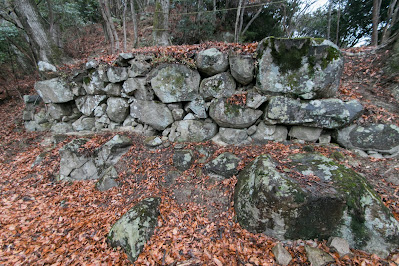






















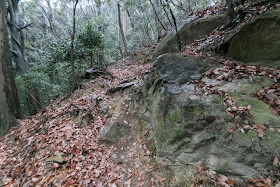













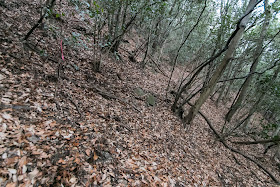








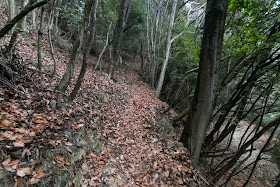







































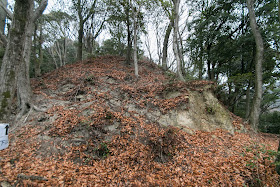







































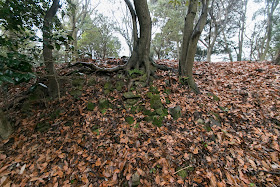

























































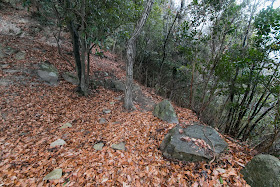







































































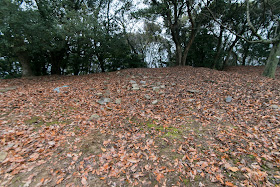





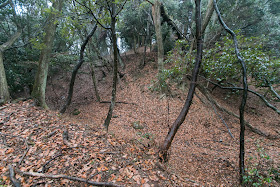













































































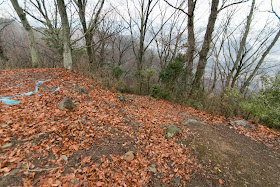
















































































No comments:
Post a Comment